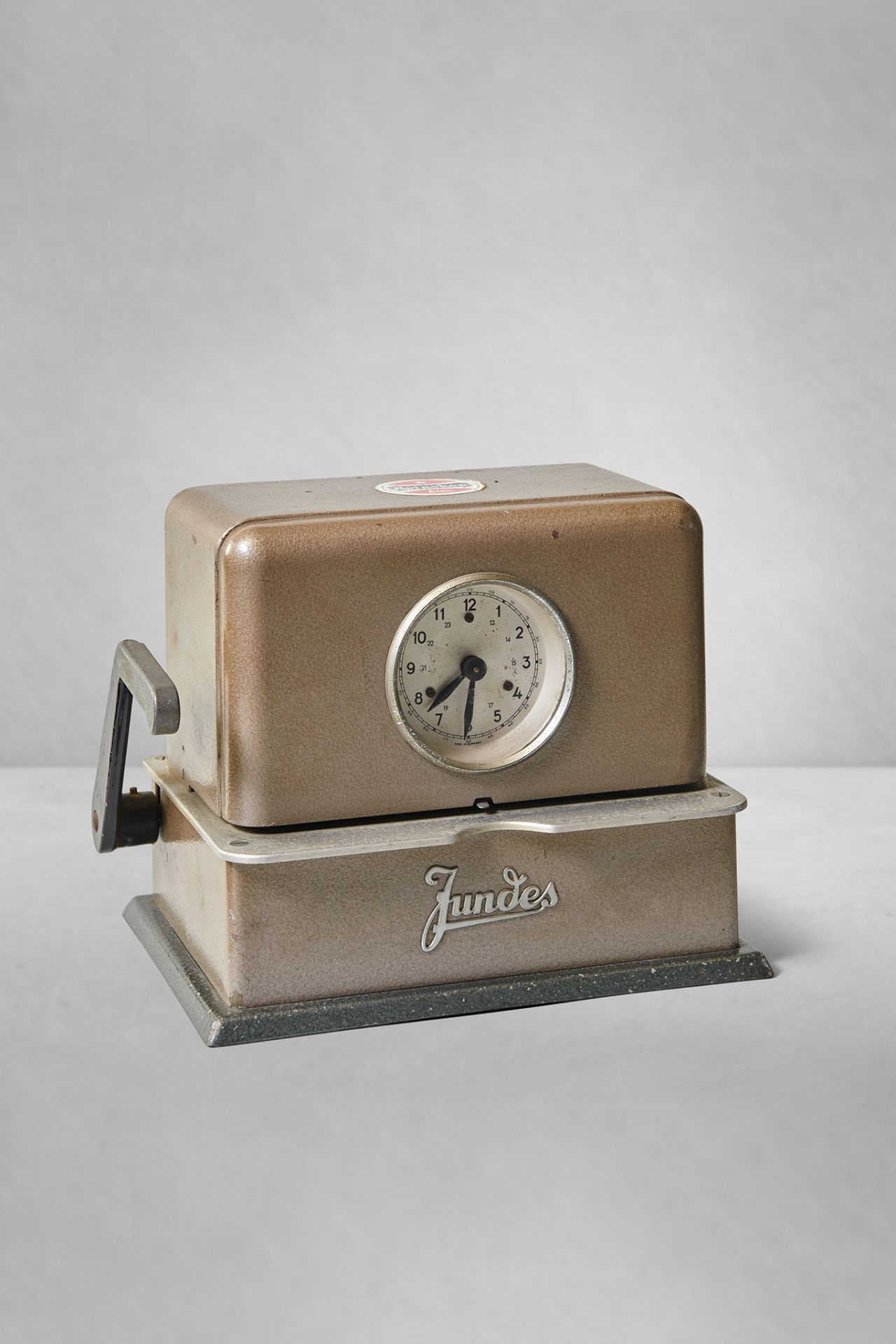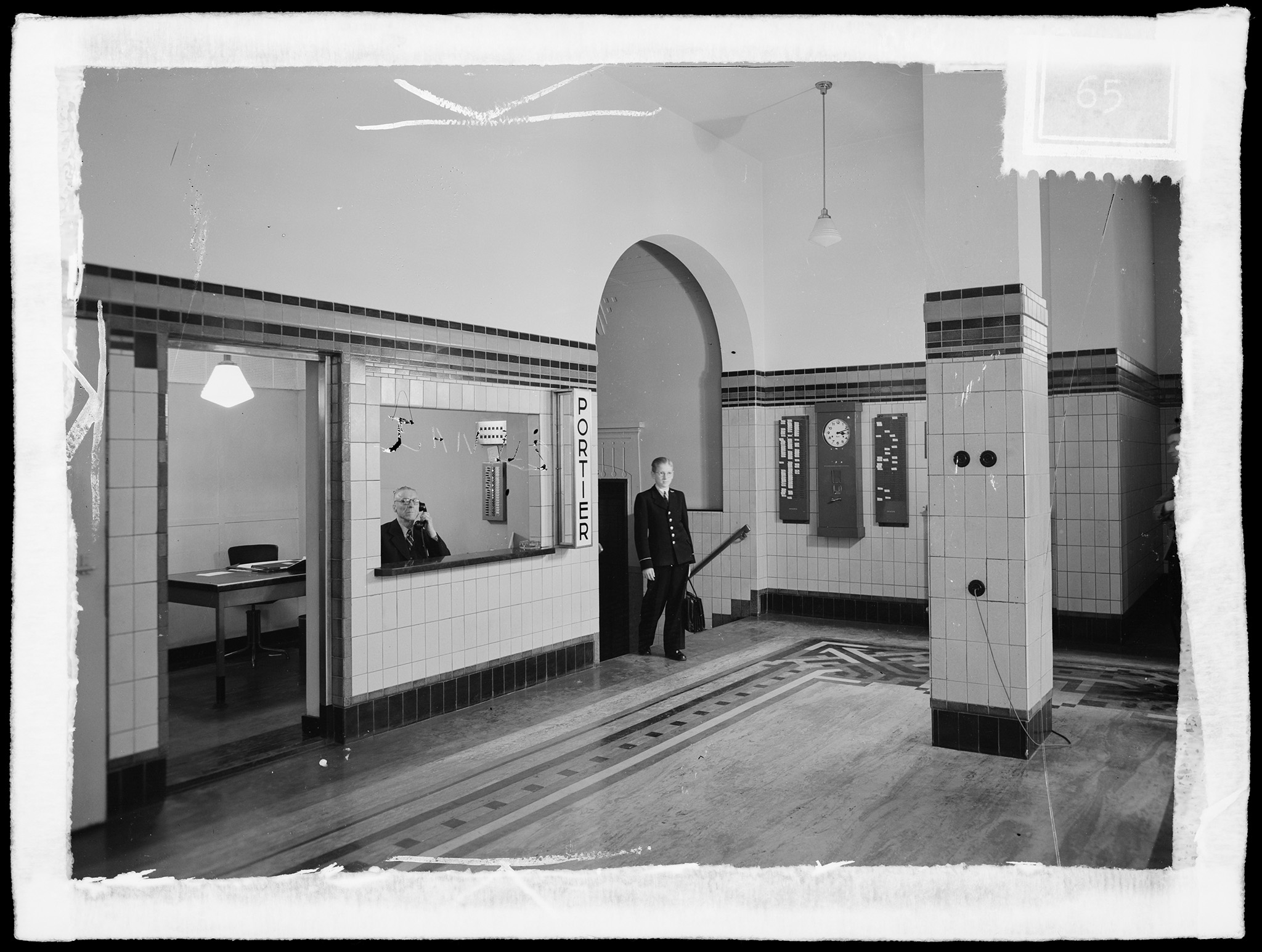INFO
Time Clock
Jundes Industrieuhren und Anzeigesysteme GmbH
1950-1960
metal
h 21 x w 24.5 x d 18.5 cm

Clock in, clock out
Who still remembers the time clock? This sturdy German specimen was most likely used at the Heineken brewery in Den Bosch. The mechanical device recorded the start and end times for employees at a place of business. They inserted a sturdy paper card into the slot and turned the lever for a timestamp. Afterward, the timecard went back into the cardholder.
Such time clocks were typically located at the entrance to the workspace or department. Heineken employed separate systems for brewery staff and office personnel. The time clock is a phenomenon from the second half of the 19th century, the heyday of industrialisation. For over a century, the device remained a familiar sight, first in factories and later on the floors of virtually all major companies.
Monitoring
This made it easier to keep track of their employees' activities, especially in large factories with numerous workers, which was quite a challenge. A photo of a time clock check at Heineken Rotterdam proves that they closely monitored clocking in and out. This practice was completely accepted, even by the employees themselves at that time.

Structure
Another antiquated means of ensuring structure in the workplace is this master clock with an electromotor from the porter's lodge of the Amsterdam Heineken brewery. The two small dials (showing hours and days of the week, along with day and night indicators were programmed via screws in the holes to control the clocks elsewhere in the building – for specific moments during the workday, such as the bell for the coffee break.
Labour and respect
Both devices are remnants of an era in the Netherlands when labour was considered the most significant purpose in a person's life. It was a time when hierarchy was a given, and those lower on the social ladder learned to respect those in higher positions. With the prosperity and individualisation of the 1960s, people increasingly disliked such directive systems. However, they never completely disappeared.
Digital
In the 1990s, more and more companies, including Heineken, shifted to digital timekeeping systems. Employees had to enter a number, swipe a magnetic card or badge, place a finger on a sensor, or even undergo a 3D scan of their face. Weekly, the employee received a summary of working hours. Many organisations, however, continued to track when employees clocked in and out. Nowadays, this is mainly done to see if someone is 'in the office’, especially since a significant portion of office staff has been working from home since the COVID period.